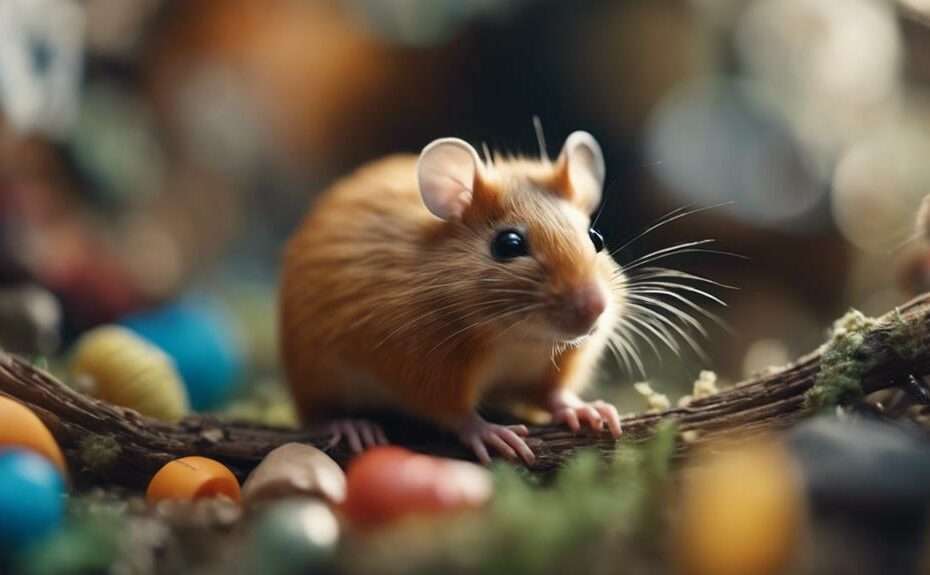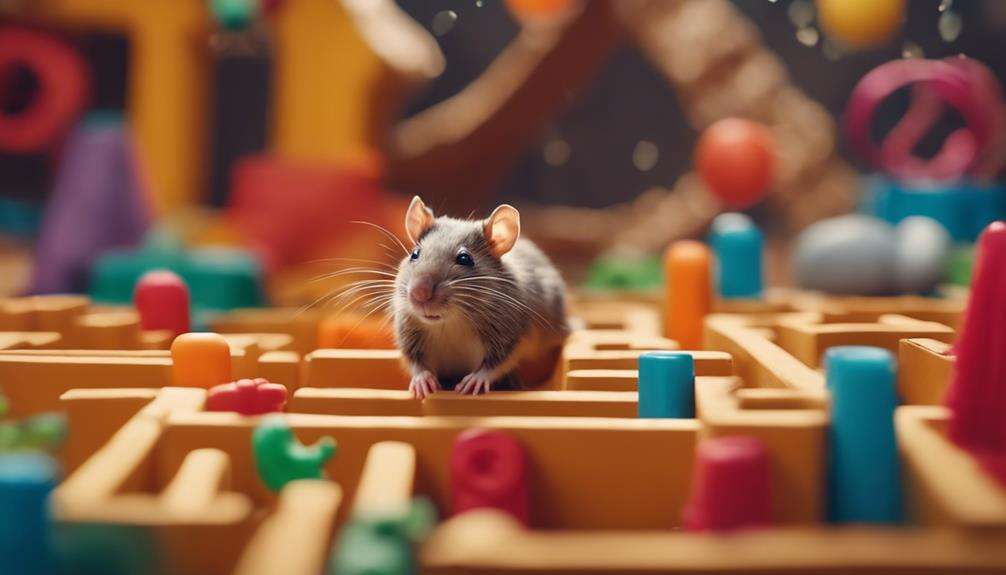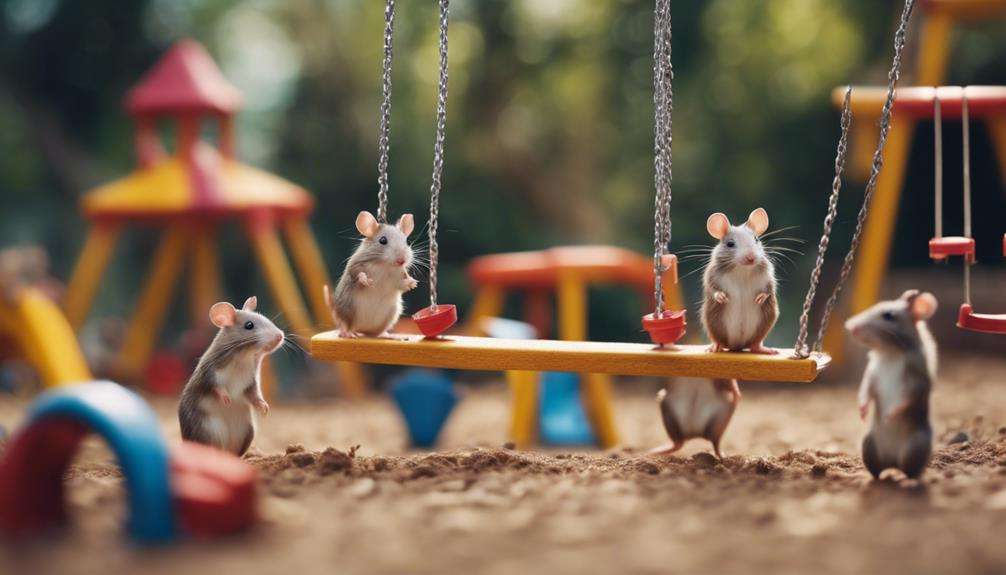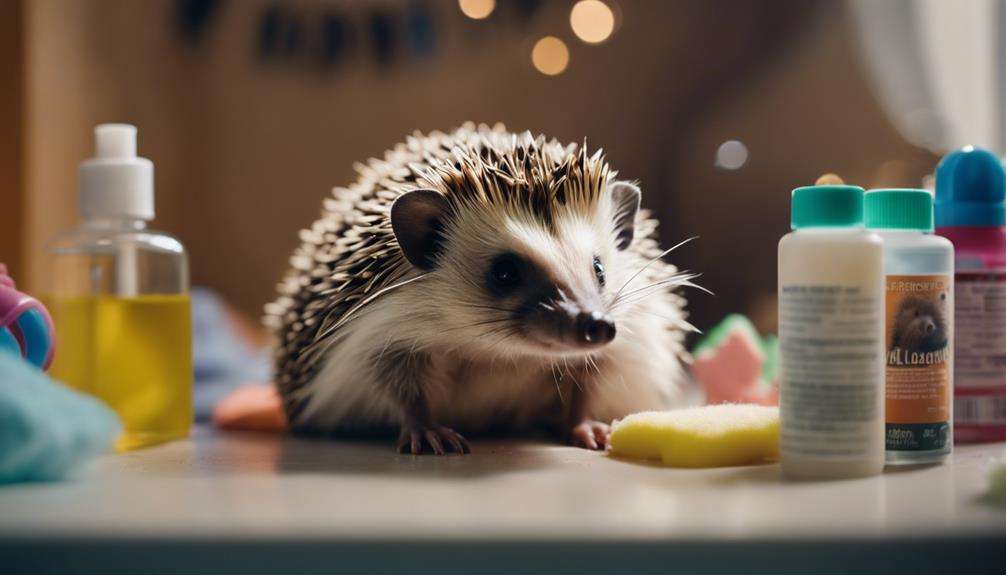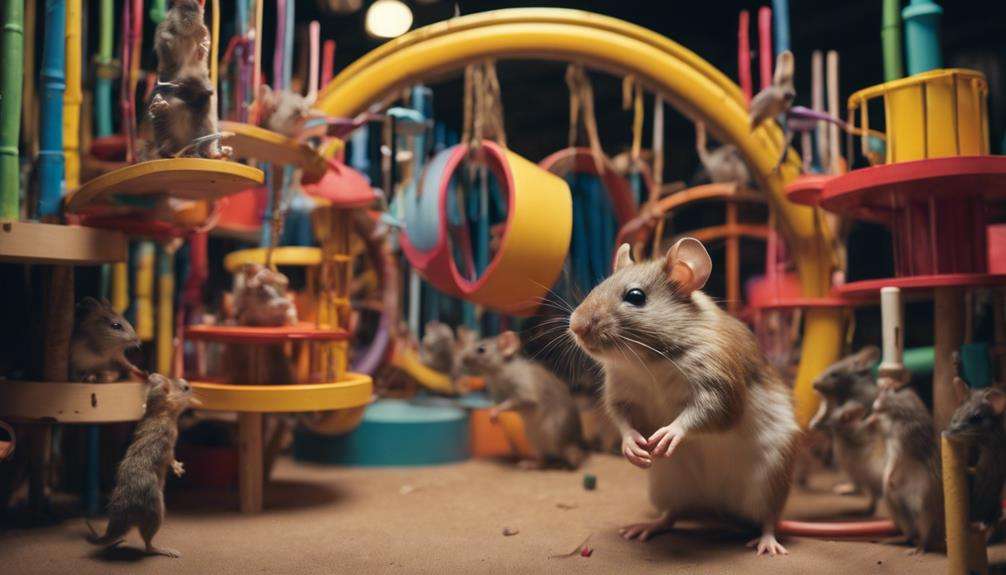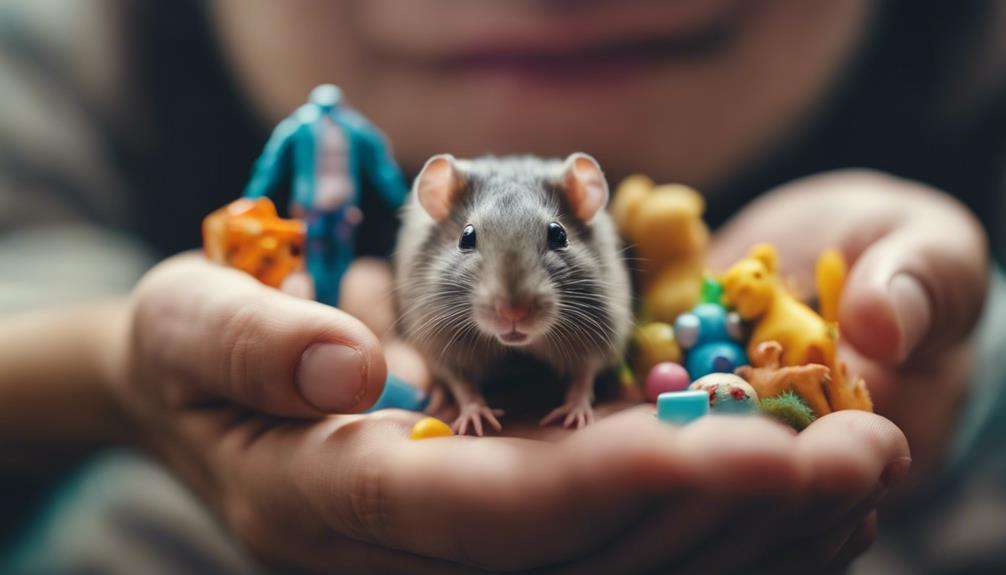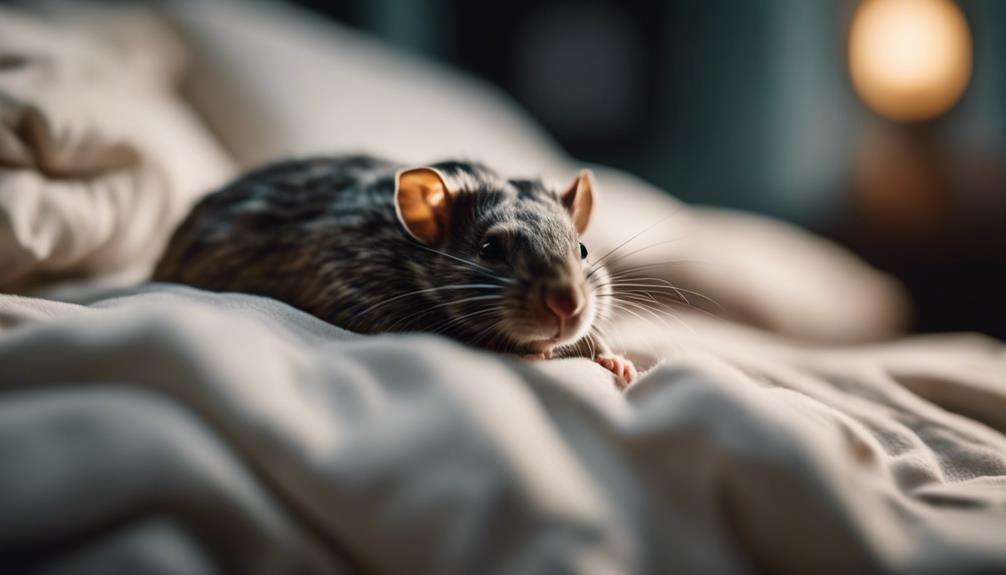Incorporate everyday household items like toilet paper rolls and fabric tunnels into your rodents' habitat to transform their living space into an engaging playground. By adding these simple elements, you can spark their curiosity and provide opportunities for exploration.
But that's just the beginning; there are more unconventional ways you can enhance your furry friends' environment.
Key Takeaways
- Utilize multi-level cages and tunnels for maximizing space and climbing opportunities.
- Incorporate DIY enrichment toys like cardboard mazes and treat dispensers for mental stimulation.
- Create a natural habitat simulation with nesting materials, branches, and safe plants for enrichment.
- Transform everyday items like toilet paper rolls and fabric tunnels into engaging playground elements.
Innovative Cage Design Ideas
For an engaging and stimulating environment for your rodents, consider incorporating innovative cage design ideas that cater to their natural behaviors and instincts. To create a dynamic living space, think about using multi-level cages. These structures not only maximize space but also provide opportunities for climbing and exploration, keeping your rodents active and mentally stimulated.
In addition to multi-level cages, adding tunnels and tubes can encourage your rodents' natural burrowing instincts and diversify their environment. Including cardboard boxes as hiding spots or foraging toys can mentally engage your pets while offering a cozy refuge. Rodents love to explore and forage, so incorporating these elements can provide hours of entertainment.
Furthermore, consider utilizing different textures like fleece, cardboard, and wood within the cage setup. These textures offer sensory stimulation and enrichment, creating a comfortable and engaging space for your rodents. By incorporating these innovative cage design ideas, you can provide your pets with a fulfilling and enriching habitat that promotes their well-being and happiness.
DIY Enrichment Toy Creations
To enhance your rodents' environment and provide them with mental stimulation, consider exploring the world of DIY Enrichment Toy Creations using safe materials and simple designs. Homemade toys can be crafted from materials like cardboard, paper tubes, untreated wood, and natural fibers, offering customization options tailored to your rodents' preferences and behaviors.
Simple DIY toys such as cardboard mazes, hanging treat dispensers, and foraging boxes are excellent choices to provide mental stimulation for your furry friends.
Cardboard can be a versatile material for creating enrichment toys. You can make tunnels, hideouts, or even puzzle feeders using cardboard boxes. Shredded paper can be used as bedding or as part of foraging toys, encouraging your rodents to search for hidden treats inside.
Incorporating treats inside toys can keep your rodents engaged and mentally active while satisfying their natural foraging instincts.
Natural Habitat Simulation Techniques
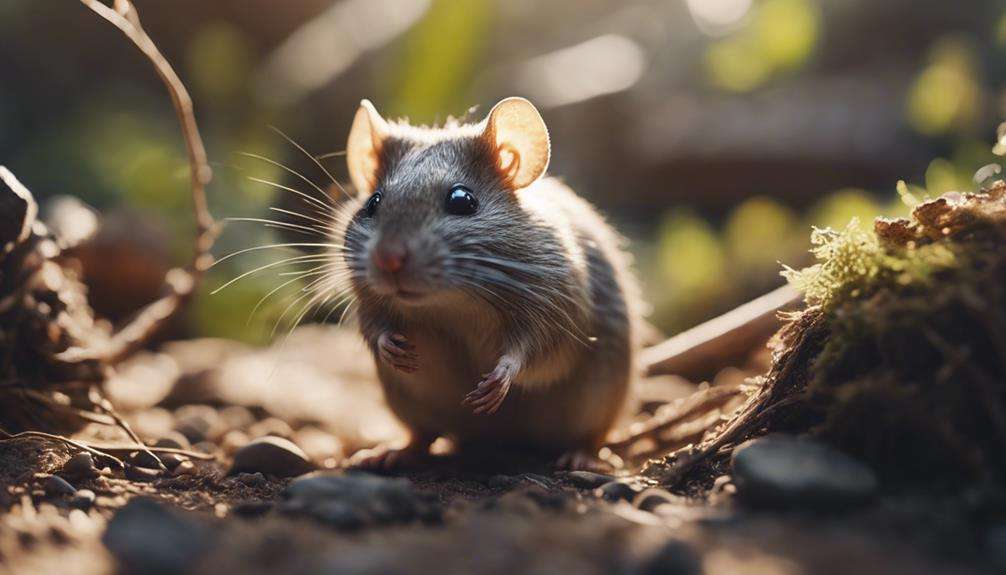
Enhance your rodents' living space by implementing natural habitat simulation techniques that mimic their wild environment for optimal well-being and enrichment. To create a habitat that replicates the natural environment of your rodents, consider the following techniques:
- Nesting Materials: Utilize shredded paper, hay, and soft fabrics to provide materials for your rodents to build cozy nests, fostering a sense of security and comfort.
- Branches and Logs: Incorporate branches, logs, and natural wood within the habitat to offer opportunities for climbing and gnawing, encouraging natural behaviors and physical activity.
- Cardboard Tubes: Introduce cardboard tubes, PVC pipes, and digging boxes to create tunnels and burrowing areas, satisfying your rodents' instinctual behaviors and promoting mental stimulation.
- Natural Substrates: Provide natural substrates like soil, sand, or shredded coconut husk for foraging and digging activities, allowing your rodents to engage in natural behaviors and explore their environment.
- Safe Plants and Herbs: Include safe plants and herbs for your rodents to nibble on, offering enrichment and promoting natural foraging behaviors within their habitat.
Frequently Asked Questions
What Can Be Used as Environmental Enrichment for Mice?
You can enhance your mice's environment with DIY maze ideas for mental stimulation, toy rotation for variety, and foraging activities to encourage natural behaviors. Regularly changing their enrichment keeps them engaged and promotes well-being.
What Is Environmental Enrichment for Rats?
To enrich your rats' environment, provide interactive toys for mental stimulation, foraging opportunities to satisfy their natural instincts, and climbing structures for physical exercise. These elements promote their well-being and happiness in their habitat.
What Are Natural Enrichment for Rats?
For your rats, natural enrichment involves foraging activities with natural materials, sensory stimulation through hideaway spots, climbing structures, and interactive toys. Mimicking wild behaviors, these elements create a stimulating and fulfilling environment.
How Do You Enrich a Rat Cage?
To enrich a rat cage, create DIY hammocks for cozy naps and provide foraging toys for mental stimulation. Add climbing structures for exercise, sensory activities for engagement, hideaway spots for security, and exercise wheels for physical health. Your rats will thrive with these enriching additions.
Conclusion
In conclusion, by incorporating innovative cage designs, DIY enrichment toys, and natural habitat simulation techniques, you can provide your rodents with a stimulating and fulfilling environment.
These creative methods not only cater to their natural instincts but also enhance their overall well-being.
So, why not give your furry friends the opportunity to thrive and explore in a space that's both enriching and enjoyable?
It's a win-win situation for both you and your beloved rodents.
